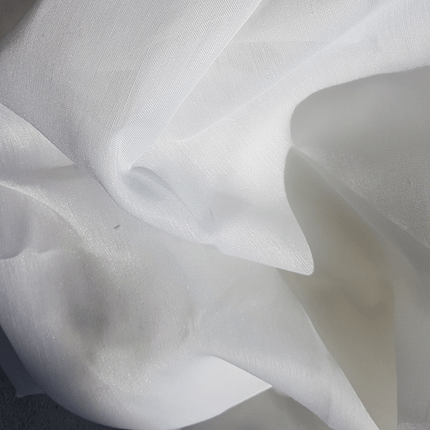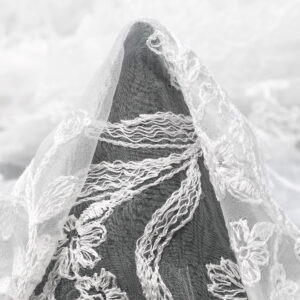Can Linen and Voile Be Blended in Textile Production?
Introduction
Fabric compatibility is crucial in fashion and sewing, influencing the final product’s aesthetics and functionality. Linen and voile, both popular fabrics, present unique characteristics that can either complement or clash when combined. In this article, we’ll explore whether these fabrics can be successfully blended, offering insights into their compatibility and practical advice for sewing enthusiasts.
Compatibility Analysis
Yes, linen and voile can be blended in textile production, but it requires careful consideration of their properties. Linen is a natural fabric known for its durability and crisp texture, while voile is lightweight and sheer, often made from cotton or synthetic fibers. These differences can work together to create a fabric that is both sturdy and airy, ideal for garments that need structure without sacrificing comfort. Key factors to consider include texture, weight, care requirements, and durability. Linen’s heavier weight and texture contrast with voile’s lightness, but when balanced correctly, they can enhance each other’s strengths.
Fabric Properties Comparison Table
| Property | Linen | Voile |
|---|---|---|
| Fiber Content | Natural (flax) | Natural (cotton) or synthetic |
| Weight & Thickness | Medium to heavy | Lightweight and sheer |
| Breathability | High | Very high |
| Stretch & Elasticity | Low | Low |
| Wrinkle Resistance | Low | Moderate |
| Care Instructions | Cool wash, iron while damp | Gentle wash, low iron |
| Durability | High | Moderate |
Benefits of Mixing These Fabrics
Blending linen and voile offers several advantages:
- Enhanced Texture and Visual Interest: The combination of linen’s texture with voile’s softness creates a fabric with unique visual appeal.
- Improved Comfort and Performance: The breathability of both fabrics ensures comfort in warm weather, making them suitable for summer garments.
- Better Drape and Movement: Voile adds fluidity to linen’s structure, improving the garment’s drape.
- Cost-Effectiveness: Combining a more affordable fabric like voile with linen can reduce costs while maintaining quality.
- Seasonal Versatility: The blend is suitable for both spring and summer wear, offering versatility in design.
- Design Possibilities: The mix allows for creative design choices in both fashion and home decor.
Potential Challenges
Despite the benefits, there are challenges to consider:
- Different Shrinkage Rates: Linen and voile may shrink differently, requiring pre-washing to minimize issues.
- Conflicting Care Requirements: Linen’s need for ironing contrasts with voile’s delicate nature.
- Texture Clash or Pilling: Differences in texture can cause pilling if not managed properly.
- Seam Puckering: The weight difference may lead to puckering, requiring careful sewing techniques.
- Color Bleeding or Fading: Ensuring colorfastness is crucial to prevent bleeding or fading.
Practical solutions include pre-washing, using appropriate interfacing, and selecting compatible colors.
Sewing & Styling Tips
- Sewing Techniques: Use a sharp needle (size 70/10 or 80/12) and fine thread to avoid damaging the fabric.
- Interfacing Needs: Lightweight interfacing can stabilize voile without adding bulk.
- Seam Finishing: French seams or serging prevent fraying and ensure clean finishes.
- Pattern Selection: Choose patterns that highlight the fabric blend, such as loose-fitting tops or skirts.
- Styling Ideas: Incorporate the blend into airy summer dresses or layered curtains for a chic look.
Care & Maintenance Guide
- Washing Instructions: Gentle cycle with cool water is recommended to preserve both fabrics.
- Drying Recommendations: Air dry to avoid shrinkage and maintain fabric integrity.
- Ironing and Steaming Tips: Iron linen while damp and use a low setting for voile.
- Stain Removal: Treat stains promptly with mild detergent to avoid setting.
- Long-term Care: Store in a cool, dry place to prevent damage and maintain quality.
FAQ Section
-
Can you wash linen and voile together?
Yes, but use a gentle cycle and cool water to accommodate both fabrics. -
Will linen shrink more than voile?
Linen tends to shrink more, so pre-washing is essential. -
What needle size should I use for sewing these fabrics together?
A size 70/10 or 80/12 needle is recommended for a clean finish. -
Can you mix linen and voile in one garment?
Absolutely, they can be combined for unique texture and style. -
How do you prevent puckering when combining these fabrics?
Use a walking foot and adjust tension to minimize puckering. -
Is it okay to mix linen and voile for upholstery?
While possible, consider the durability requirements of upholstery. -
What’s the best way to finish seams with these fabrics?
French seams or serging provide a polished, durable finish.
By understanding the properties and compatibility of linen and voile, you can create beautiful, functional garments and home decor items that showcase the best of both fabrics.



Leave a Reply